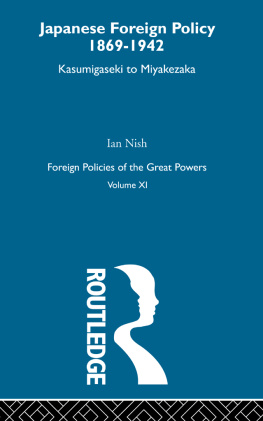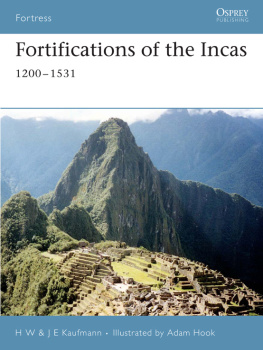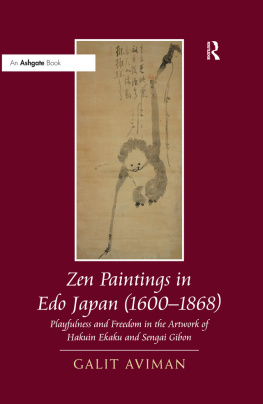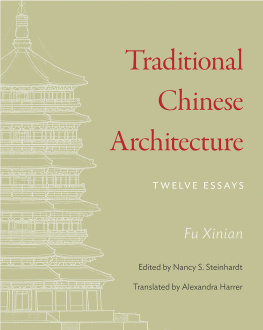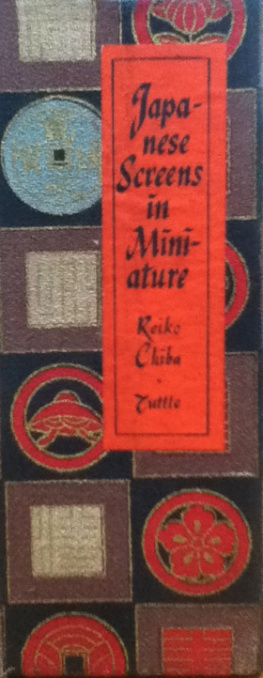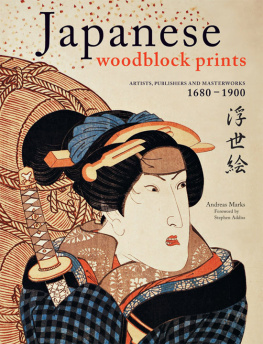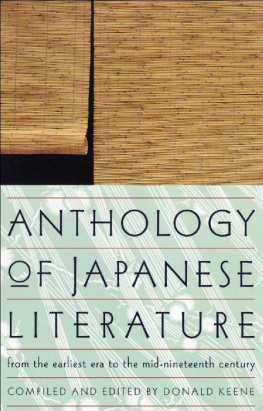
A HISTORY OF
JAPANESE ART
Dear Reader: In order to view all colored text and non-English text accurately, please ensure that the PUBLISHER DEFAULTS SETTING on your reading device is switched to ON. This will allow you to view all non-English characters and colored text in this book. Tuttle Publishing
Noritake Tsuda was a Lecturer on Fine Arts at New York University. He was also on the staff of the Imperial Museum of Art in Tokyo and in this capacity traveled to New York and spent two years in the Metropolitan Museum of Art's Department of Far Eastern Art aiding in the preparation of a catalog of Japanese arms and armor. He is also the author of ABC of Japanese Art.
Patricia Graham
Patricia Graham, a former professor of Japanese art and culture, and museum curator, is an independent scholar and Asian art consultant based in Lawrence, Kansas. Among her many publications are two books: Tea of the Sages: The Art of Sencha (University of Hawaii Press, 1998) and Faith and Power in Japanese Buddhist Art: 1600-2005 (University of Hawaii Press, 2007).
A HISTORY OF
JAPANESE ART
From Prehistory to the Taisho Period
With a new foreword by Patricia Graham
NORITAKE TSUDA
A Comprehensive Guide to the Temples, Museums, and Art Treasures of Japan.
TUTTLE PUBLISHING
Tokyo Rutland, Vermont Singapore
Published by Tuttle Publishing, an imprint of Periplus Editions (HK) Ltd., with editorial offices at 364 Innovation Drive, North Clarendon, Vermont 05759 U.S.A.
Copyright 2009 Periplus Editions (HK) Ltd.
All rights reserved. No part of this publication may be reproduced or utilized in any form or by any means, electronic or mechanical, including photocopying, recording, or by any information storage and retrieval system, without prior written permission from the publisher.
Library of Congress Cataloging-in-Publication Data
Tsuda, Noritake.
[Handbook of Japanese art]
A history of Japanese art: from prehistory to the Taisho period / by Noritake Tsuda.p.cm.
Previously published as: Handbook of Japanese art. 1976.
Includes bibliographical references and index.
ISBN 978-4-8053-1031-1 (pbk.: alk. paper)
1. Art, Japanese. I. Title.
N7350.T73 2009
709.52-dc22
2008055786
ISBN 978-4-8053-1031-1
ISBN 978-1-4629-1678-8 (ebook)
Distributed by
North America, Latin America & Europe
Tuttle Publishing
364 Innovation Drive
North Clarendon, VT 05759-9436 U.S.A.
Tel: 1 (802) 773-8930; Fax: 1 (802) 773-6993
www.tuttlepublishing.com
Japan
Tuttle Publishing
Yaekari Building, 3rd Floor
5-4-12 Osaki
Shinagawa-ku
Tokyo 141 0032
Tel: (81) 3 5437-0171; Fax: (81) 3 5437-0755
Asia Pacific
Berkeley Books Pte. Ltd.
61 Tai Seng Avenue #02-12
Singapore 534167
Tel: (65) 6280-1330; Fax: (65) 6280-6290
www.periplus.com
12 11 10 09 10 9 8 7 6 5 4 3 2 1
Printed in Singapore
TUTTLE PUBLISHING* is a registered trademark of Tuttle Publishing, a division of Periplus Editions (HK) Ltd.
CONTENTS
Chapter 1
Chapter 2
Chapter 3
Chapter 4
Chapter 5
Chapter 6
Chapter 7
Chapter 8
Chapter 9
Chapter 10
Chapter 11
Chapter 12
Chapter 1
Chapter 2
Chapter 3
Chapter 4
Chapter 5
Chapter 6
Appendixes
THE DISTRIBUTION OF JAPANESE ART


FOREWORD
The occasion of this reprinting of Tsuda Noritake's 1935 Handbook of Japanese Art, with the new title, A History of Japanese Art, From Prehistory to the Taisho Period, offers an interesting opportunity to consider the relationship between Japanese politics and culture at a pivotal moment in history. After a period of intense industrialization in the first two decades following the Meiji Restoration in 1868, influential private individuals and government officials, sometimes working cooperatively, began to create arts institutions, arts organizations, and laws to rekindle appreciation for the nation's cultural heritage. They designed these not only to foster appreciation for Japan's past, but also to further its modernizing processes and to fashion its contemporary identity in the international arena. Contemporaneously, government directives of 1890 proclaimed that native gods protected the nation (Imperial Rescript to Soldiers and Sailors) and instructed all students in values of filial piety, with particular emphasis on ensuring their loyalty to the Emperor (Imperial Rescript on Education). By the beginning of the twentieth century, these and other efforts had resulted in widespread and varied nationalist movements, aspects of which the government used to justify its imperialist ambitions (Gluck 1985, Fujitani 1996). In this environment, art took center stage. Promoting the nation's art abroad became a means for Japan to earn respect from Western nations and garner goodwill to deflect international criticism from its unpopular foreign policies. Tsuda's Handbook of Japanese Art, which was the first road survey of Japanese art published in Japan, was produced by a commercial Japanese publisher that worked in close cooperation with government cultural promotion agencies. Thus is must be considered as part of this effort.
Tsudas Life and Professional Career
Despite investigation for this essay, much of Tsuda Noritake's life remains a mystery. Bibliographic records list his birth date as 1883, but do not provide a death date. Information on Tsuda comes from citations to his numerous publications, unpublished manuscripts, and records of lectures, both in Japanese and English, between 1908 and 1961 (see Appendix 3 on page 455) in bibliographic databases and library catalogues, and materials in the archives of the Metropolitan Museum of Art in New York, where he worked briefly in the 1920s. Names of scholars that appear in the records of Tsuda's publications, and the text and preface to his Handbook of Japanese Art, also help identify his mentors and the scholarly circles to which he belonged.
The level of detail in Tsuda's first extant writing, a lengthy, unpublished, English language manuscript on Japanese lacquer dated 1908, suggests that he possessed inside knowledge of the field. Supporting this supposition are notes in a Christies, London, art auction catalogue of November 17,1999 (lot #112), about a lacquer writing box attributed to the self-taught lacquer artist Tsuda Sokan (1868-1934). The catalogue proposes some familial connection between Sokan and Tsuda Noritake, because Tsuda Noritakes lacquer manuscript acknowledges It Teibun (who worked at the same time as Sokan in a similar manner), as the source of much of his information. Tsuda's first known published article of 1909, about a lacquer saddle, supports the conclusion that special knowledge of lacquer facilitated his entry into the art world.
This manuscript, which appears to have been composed initially in English, also infers that at an early age Tsuda had attained good command of English. Many students studied English then due to government and private initiatives to facilitate communication and better understanding about Japan with foreigners, although few became highly proficient. Tsuda's capability with English undoubtedly helped secure his future as an emissary of Japanese culture abroad. In this climate, the prestigious monthly art journal
Next page

